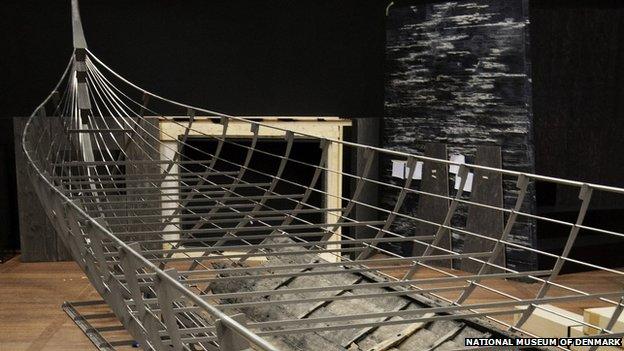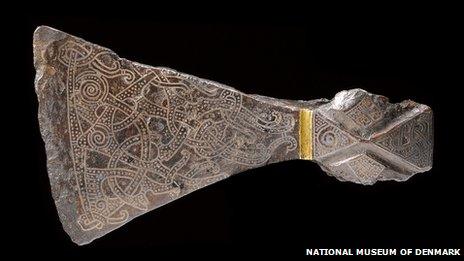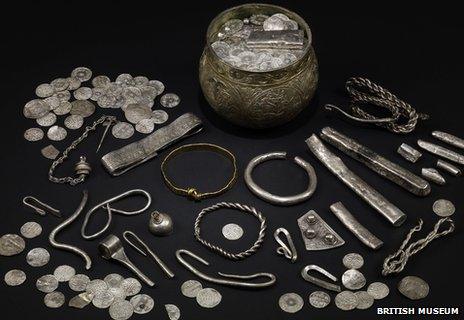Viking ship to arrive at British Museum in 'flat pack'
- Published

The 37-metre warship was built in southern Norway around 1025, and deliberately sunk in Denmark in the mid-11th century
The longest Viking ship ever found will arrive at the British Museum in a "flat pack" from Denmark early next year, curators have revealed.
The 37-metre ship is the centrepiece of the museum's Vikings: Life and Legend exhibition which opens in March 2014.
"It's essentially an enormous Meccano set which can be put together," curator Gareth Williams told the BBC.
It is the British Museum's first major exhibition on Vikings for more than 30 years.
Currently on display in the National Museum of Denmark until November, the timbers of the 1,000-year old ship will be packed up in individual boxes, shipped to the UK and re-assembled for display in the British Museum's newly-built Sainsbury Exhibitions Gallery.
"As you might expect of a Scandinavian-designed ship, it comes flat packed," Mr Williams said at Thursday's launch event.
"It's massive by the standards of the time," he added. "It's longer than the Mary Rose."
Experts are expected to take two weeks to put the ship back together when it arrives in London in January.

A silver-inlaid axehead (AD 900s)
Known as Roskilde 6, it was excavated from the banks of Roskilde fjord in Denmark in 1997. About 20 per cent of the original timber survives and it is displayed on a steel frame that reconstructs the shape of the original vessel.
It dates from around AD 1025, the high point of the Viking Age when England, Denmark, Norway and possibly parts of Sweden were united under the rule of Cnut the Great.
The ship will be displayed alongside Viking artefacts from the British Museum's own collection and elsewhere in Britain and Ireland.
The exhibition aims to reflect the role of Vikings as both raiders and traders.
"The Vikings were very keen on acquiring gold and silver," said Mr Williams. "Their most favourite means of expressing power and wealth and status was basically 'bling'."

The Vale of York Hoard was jointly purchased by the British Museum and the York Museums Trust under the 1996 Treasure Act
The exhibition will include recently excavated skeletons from a mass grave of executed and beheaded Vikings near Weymouth in Dorset.
"It's a reminder that the Vikings were not always the invincible warriors of legend," Mr Williams said.
He said visitors should not expect to see any Viking helmets with horns. Those were apparently the invention of 19th Century story illustrators.
Also on display will be the Vale of York Hoard which was discovered - by a metal detector - near Harrogate in 2007. It includes 617 coins, six arm rings and a quantity of bullion.
British Museum director Neil MacGregor said: "This world which we think of as essentially of violence and brutality is also a world of extraordinary sophistication and cultural achievement."
- Published9 September 2013
- Published14 August 2013
- Published27 June 2013
- Published14 December 2012
- Published21 July 2012
- Published16 July 2012
- Published18 May 2012